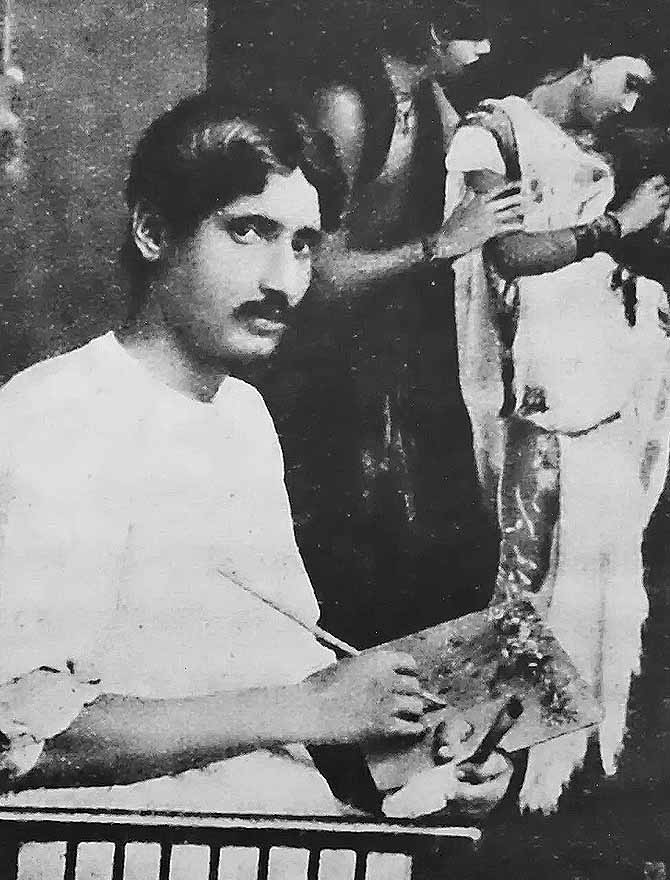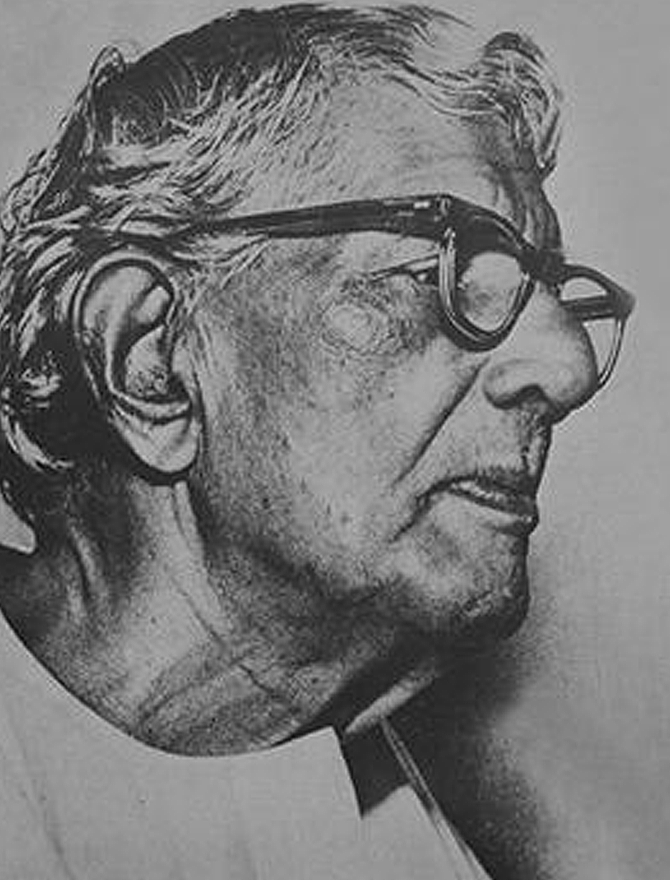FEATURED ARTISTS
GAGANENDRANATH TAGORE

Gaganendranath Tagore (1867–1938), a luminary of Indian modernism, redefined the aesthetic landscape of Bengal with his audacious fusion of tradition and avant-garde experimentation. As a scion of the illustrious Tagore family, his oeuvre transcended the academic realism of his era, embracing a kaleidoscopic interplay of cubism, expressionism, and indigenous motifs. Works like his Himalayan Dreamscape series or whimsical Chaitanya illustrations reveal a visionary hand, where angular forms and luminous washes conjure ethereal realms, blending the mystical with the structural. His satirical cartoons, piercing colonial society with incisive wit, further underscore his versatility, positioning him as a cultural provocateur whose brushstrokes challenged both artistic and social conventions.
Tagore’s legacy, enshrined in the hallowed halls of institutions like Chitrakoot Art Gallery, endures as a testament to his role as a harbinger of modernist thought in India. His pioneering exploration of light and shadow, as seen in nocturnal cityscapes or fantastical narratives, evokes a poetic tension between the tangible and the sublime. By integrating global influences—Japanese woodblock prints, Western cubist fragmentation—with Bengal’s spiritual ethos, he crafted a visual language that was both universal and deeply rooted. His work, celebrated in retrospectives such as Chitrakoot’s 2024 tribute, continues to inspire, inviting viewers to traverse the liminal spaces where tradition dances with innovation, and the mundane ascends to the transcendent.
HEMEN MAZUMDER

Hemen Mazumdar (1898–1987), a luminous figure in Indian art, reshaped the visual culture of Bengal with his evocative blend of romanticism and technical finesse. Born in a modest family in what is now Bangladesh, Mazumdar rose to prominence through his mastery of oil painting, diverging from the era’s dominant academic realism to craft a deeply emotive, lyrical style. His works, such as the iconic Lady in the Moonlight or intimate portraits of rural women, capture an ethereal interplay of light, texture, and sensuality, rendering the feminine form with both reverence and modernist subtlety. His bold use of chiaroscuro and soft, luminous hues imbued his canvases with a dreamlike intimacy, elevating everyday subjects into timeless archetypes.
Mazumdar’s legacy, preserved in collections like the National Gallery of Modern Art, endures as a beacon of individualistic expression in Indian modernism. His ability to weave emotional depth with technical precision—evident in his delicate brushwork and atmospheric compositions—set him apart as a poet-painter of human experience. Influenced by European impressionism yet grounded in Bengal’s cultural ethos, he created a visual idiom that resonated universally while remaining distinctly Indian. Celebrated in exhibitions like the 2023 Kolkata retrospective, Mazumdar’s work continues to captivate, inviting viewers into a world where the ordinary is transformed into the sublime through the alchemy of light and emotion.
Jamini Roy

Jamini Roy (1887–1972), a titan of Indian modernism, transformed the artistic landscape of Bengal with his bold synthesis of folk traditions and modernist sensibilities. Emerging from a middle-class family, Roy abandoned the academic realism of his early training to pioneer a distinctive style rooted in Bengal’s Patua art and Kalighat painting. His iconic works, like Three Pujarins or vibrant depictions of village life, pulse with simplified forms, vivid colors, and rhythmic lines, evoking the soul of rural India while embracing universal archetypes. With earthy palettes and deliberate flatness, he infused his canvases with a timeless spirituality, redefining Indian art’s global dialogue.
Roy’s legacy, celebrated in institutions like the National Gallery of Modern Art, endures as a bridge between tradition and innovation. Rejecting Western academic norms, he drew from indigenous crafts—scroll paintings, temple terracottas—and infused them with modernist restraint, creating a visual language both accessible and profound. His experiments with form, as seen in his Christ series or animal motifs, reveal a restless creativity that challenged cultural hierarchies. Honored in retrospectives like the 2024 Delhi exhibition, Roy’s work continues to resonate, inviting viewers into a luminous world where folk simplicity meets modernist depth, and the everyday ascends to the eternal.